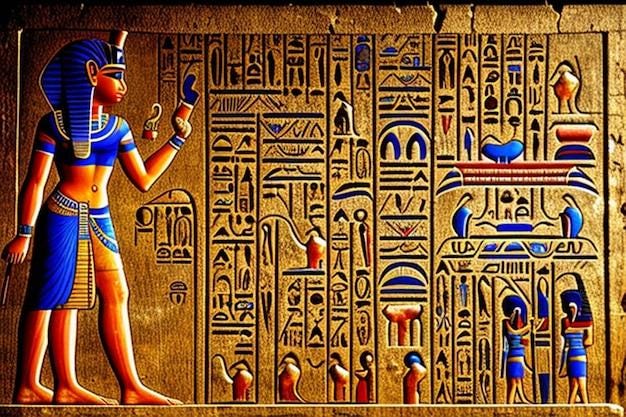
The History of Colonics: A Journey Through Time
Colonics, also known as colonic hydrotherapy or colon irrigation, have a long and varied history that spans ancient civilizations to modern wellness practices. This therapeutic procedure involves flushing the colon with water to remove waste and toxins, and its use reflects humanity’s enduring interest in cleansing the body for health and vitality. Let’s dive into the rich history of colonics and explore how it evolved into the popular wellness practice we see today.
If you would prefer a snapshot of the history in Colonics in bullet points, please scroll through to the end of the article.
Ancient Beginnings: Egypt and Greece
The origins of colonic cleansing can be traced back to ancient Egypt. References to the practice date back as far as 1500 B.C., where medical papyri describe enemas as a method of cleansing the body. The Egyptians believed that undigested food in the body caused disease and that colon cleansing could remove these harmful substances. They even had a specific deity, Thoth, associated with healing and cleanliness.
From Egypt, the practice made its way to ancient Greece. Hippocrates, often regarded as the father of modern medicine, used enemas as a treatment for fever and other illnesses. The Greeks, like the Egyptians, believed that maintaining a clean and healthy colon was essential for overall well-being.
Medieval and Renaissance Europe
During the Middle Ages, the practice of colonic irrigation fell somewhat out of favor, as European medicine became heavily influenced by religious dogma and less by the practical methods of ancient physicians. However, during the Renaissance, there was a resurgence of interest in the healing arts, including the ancient techniques of cleansing the body. Influenced by Greek and Roman medical texts, physicians began recommending enemas as part of a broader regimen to maintain health.
By the 17th century, colonics were a common treatment among the European elite. In France, King Louis XIV was said to have had over 2,000 enemas during his reign! The procedure was believed to promote health, vitality, and even beauty.
The 19th and Early 20th Century: Rise of Hydrotherapy
The 19th century saw a renewed interest in hydrotherapy—the use of water to treat various health issues. During this time, colonics were integrated into this movement, with practitioners advocating the procedure as a way to detoxify the body and improve health. Dr. John Harvey Kellogg, a well-known American physician and health reformer, was a prominent advocate for colonics in the early 20th century. He believed that most diseases originated from the intestines and that colon cleansing was a vital part of maintaining health.
Kellogg, who ran the Battle Creek Sanitarium in Michigan, prescribed colonics to many of his patients. He even claimed that the procedure could cure a variety of ailments, from digestive problems to mental health disorders. His influence helped popularize colonics in the United States and abroad.
The Modern Revival: Colonics in the 21st Century
In the mid-20th century, colonics fell out of mainstream medical favor, particularly as conventional medicine advanced. However, the late 20th century saw a resurgence of interest in alternative and holistic health practices, including colonics. With the rise of detox and wellness culture, many people turned to colonics as a way to cleanse their bodies and improve digestive health.
Today, colonics are often marketed as a method of detoxification, believed to flush toxins from the body, improve energy levels, and promote overall wellness. Although the medical community remains divided on the procedure’s benefits, it has become a popular choice in wellness centers and spas, with practitioners touting its ability to enhance digestion and even support weight loss.
A snapshot of the History of Colonics;
• The ancient Egyptians, according to the Ebers Papyrus, of the 14th century B.C, frequently use the enemas (clyster) to treat many intestinal conditions.
• 6th century B.C. Babylonian and Assyrian tablets also memorialize colon cleansing and rectal speculums (1).
• Hippocrates, the Greek “father of modern medicine,” prescribed water enemas for several conditions about 2,600 years ago.
• Roman physician, Asclepiades of Bithynia (124 B.C.) who is credited with establishing medicine in Rome, preferred the enema over laxatives. Asclepiades used the enema for intestinal worms and fevers.
• In India, enemas were recommended for inner cleansing by patanjali, author of the first written work on yoga, in around 200 B.C.
• The 17th century became known as the “age of the enema”. It was the fashion in Parisian society to enjoy as many as three or four enemas a day, the popular belief being that an internal washing or “lavement” was essential to well-being. \
• Late 19th and early 20th century, the use of colon hydrotherapy, and enemas, slowly dwindled among the medical community as laxatives and other drugs became more commercially available and most colon hydrotherapy equipment was removed from hospitals and nursing homes.
Despite the difficulties in the early 1900’s, the value of colon hydrotherapy continued to be recognized by several medical doctors. Most noteworthy were James A. Wiltsie M.D., Joseph Waddington M.D., and John H. Kellogg M.D. In the early 1900’s Dr. John H. Kellogg used forms of colon therapy on several thousand of his patients. In a 1917 edition of the Journal of American Medical Association (JAMA) Dr. Kellogg reported that in over forty thousand (40,000) gastrointestinal disease cases, he had used surgery in only 20 cases. y 1900s, heads of industry and even presidents visited and treated with Dr. Kellogg.
• 2000’s, The types and styles of colon hydrotherapy increased resulting in an acknowledgement that there was a need to ensure the safety of the public by establishing policies for the manufacturing of colonic equipment. As a result of the 1976 Medical Device Amendments Act, the FDA required each manufacturer of colon hydrotherapy equipment marked in the USA to be registered with the FDA.
Conclusion
From ancient Egypt to the modern-day wellness movement, colonics have had a long and evolving history. While the scientific community continues to debate the efficacy of colonic irrigation, it remains a popular practice for those seeking a deeper level of detoxification. Whether used as a medical treatment or a wellness ritual, colonics have endured for millennia, reflecting our ongoing desire to cleanse and care for our bodies from the inside out.
Your health is in your hands. Feeling to explore an ancient healing practice that has lasted the test of time?
Call us at 0401 703727 or book your appointment online by clicking HERE.




